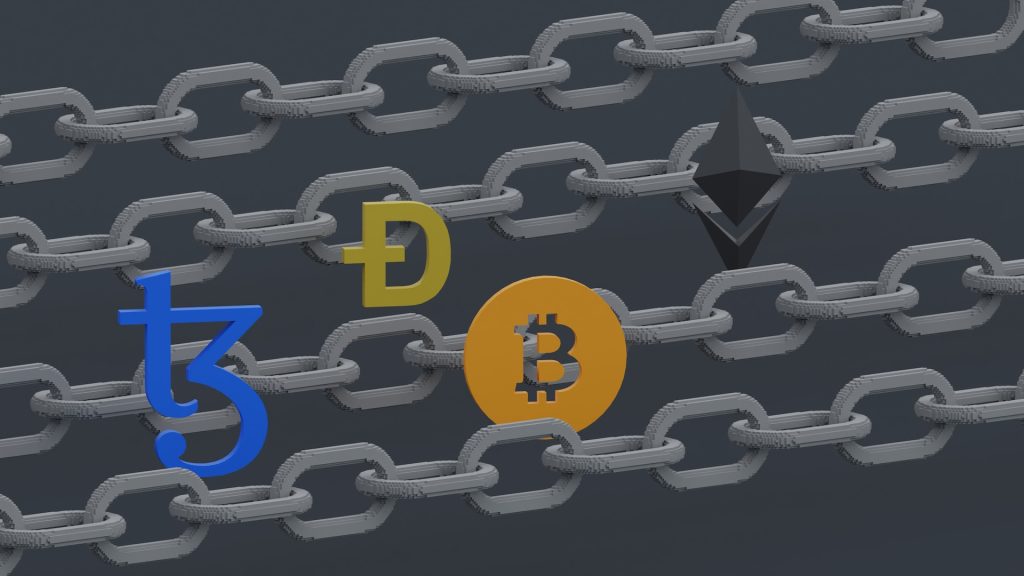Blockchain technology has ushered in a revolution focused on enhancing data security, transparency, and decentralized governance. Despite its significant potential, the field contends with numerous challenges such as performance bottlenecks during high-volume transactions, complex governance mechanisms, interoperability issues across different blockchain platforms, and the struggle to maintain data integrity and availability. These limitations have curtailed the scalability, security, and user experience of many projects. In response, the Algen Hyper Application Blockchain introduces a groundbreaking approach that synergizes artificial intelligence (AI) with blockchain technology to forge an efficient, secure, and responsive blockchain ecosystem. This innovative platform offers developers an open and adaptable environment, designed to improve the performance of public chains and cater to the rising demand for high-performance decentralized applications (DApps).
Algen’s solution incorporates an advanced data availability layer, cross-chain relay systems, and an optimized consensus mechanism, catering to a diverse range of application scenarios such as decentralized finance (DeFi), supply chain management, social networking, and gaming. These enhancements not only boost the network’s performance and stability but also provide users with a richer and more autonomous decentralized experience. In this article, we’ll explore how the Algen Hyper Application Blockchain capitalizes on its innovative features to overcome the prevalent challenges of blockchain technology, setting the stage for a truly decentralized Web3 world.
Core Advantages of Algen
The core strengths of Algen Blockchain are anchored in its ASDO technology and Data Availability (DA) —innovative features that not only boost blockchain performance but also offer developers a vast and flexible landscape for application development.
ASDO Technology:
ASDO technology represents a pioneering stride in the Algen Blockchain network. It employs an intelligent decision-making mechanism that dynamically optimizes the flow of information through AI integration. This technology can analyze market dynamics and user behavior in real-time, forecast future trends, and automatically adjust data processing strategies to maximize network efficiency and uphold decentralization principles.
In addition, ASDO integrates advanced machine learning and deep learning models, including Large Language Models (LLMs), Long Short-Term Memory networks (LSTMs), and Autoregressive Integrated Moving Average (ARIMA) models, to continually monitor market activities. It can adapt to changes in regulatory rules by predicting shifts in market sentiment and adjusting its approach—shifting from Rollup technology to direct Layer 1 verification, for instance, to maintain operational efficiency.
Moreover, ASDO employs a robust data analysis framework based on large language models to filter and manage ecosystem information. It chooses appropriate data availability strategies for various application types, such as gaming and social interactions under Layer 2, and traditional Rollup or direct Layer 1 processing for large-scale, high-value transactions to prevent network congestion and ensure information value on the blockchain.
ASDO also vigilantly monitors Algen’s operational state, adjusting information grading standards based on real-time conditions and situations to prevent information overload or uneven distribution. This ensures the blockchain operates at maximum efficiency and remains in a Pareto-optimal state, providing users with secure, on-chain, or off-chain data availability options, tailored for dynamically optimal information processing.
Data Availability:
The DA layer is another hallmark of Algen Blockchain, designed to process a vast amount of transaction data off-chain, while recording only crucial information on-chain. This significantly boosts transaction throughput, making it ideal for applications that manage extensive user interactions and transactions, such as decentralized gaming and social networks. The DA layer enables Algen Blockchain to support more complex business logic while preserving the security and decentralization characteristics inherent to blockchain technology.
Together, ASDO and the DA layer equip the Algen Hyper Application Blockchain to robustly support diverse application scenarios. In DeFi, Algen Blockchain facilitates rapid asset trading and liquidity management; in supply chain management, it enables comprehensive tracking from production to consumption, enhancing transparency and efficiency; and in gaming and social networks, it manages extensive user interactions and transactions, enriching the user experience.
The technical architecture of Algen Blockchain not only elevates the performance and stability of the network but also provides users with an enriched, liberated decentralized experience. As Algen continues to evolve and its application scenarios expand, the Algen Hyper Application Blockchain is poised to significantly advance blockchain technology into a new phase of development.
Application Scenarios
Finance: Algen Blockchain significantly streamlines the process of financial transactions. Financial institutions can now execute cross-border payments, asset transfers, and trade settlements more rapidly and at reduced costs, while still upholding the security and immutability of transactions. Furthermore, Algen’s smart contract capabilities automate complex financial agreements, cutting down on intermediaries and enhancing the efficiency and reliability of financial services.
Supply Chain: In supply chain management, Algen’s cross-chain technology and Data Availability (DA) layer substantially boost transparency and traceability. Businesses can chronicle every stage of a product’s journey—from production and transportation to sales—ensuring that each link in the supply chain is effectively tracked and verified. This level of transparency not only fosters consumer trust but also facilitates the swift identification and resolution of issues when necessary, enhancing the supply chain’s responsiveness and risk mitigation capabilities.
Digital Identity: Algen leverages its Voice DID technology to offer users a unique, secure, private, and cross-platform compatible identity identifier. Its decentralized identity system thwarts identity fraud and data breaches while granting users complete control over their personal information. Within the Algen ecosystem, users enjoy the freedom and security of interacting online without concerns about the safety of their personal data.
Through these key applications, the Algen Hyper Application Blockchain has demonstrated its vast applicability and potential across various industries. Whether it’s facilitating the high-speed processing of financial transactions, managing supply chains with transparency, or securely verifying digital identities, Algen provides tailored solutions to meet the diverse needs of its users.
To engage more developers and businesses, Algen offers robust API interfaces and SDK toolkits, and it will regularly host hackathons and developer conferences to foster innovation and collaboration. It also provides professional consulting and customized solutions for enterprises to address their unique challenges, along with continuous technical support. The Algen Blockchain ecosystem encompasses an active community where users can receive the latest technology updates, participate in discussions, and share ideas for future developments.
Embarking on a New Journey
Algen Hyper Application Blockchain is committed to leading the cross-industry integration of blockchain technology. With its innovative technological architecture and a strong network of partners, Algen overcomes practical application challenges and provides substantial support for digital transformation. Demonstrating its technological prowess in areas such as finance, supply chain management, and digital identity verification, Algen Blockchain is positioned to be a frontrunner in promoting the broad adoption of blockchain technology.
In this era of swift technological advancement, Algen is ready to spearhead this transformation. We invite users and partners to explore and discuss the solutions offered by Algen, which open up limitless possibilities for businesses seeking to boost operational efficiency and for developers eager to craft groundbreaking applications. Let’s collaborate to shape a new chapter in blockchain technology and realize the vision of information freedom.
With Algen, we anticipate a digital future that is efficient, transparent, and secure—a future that we are actively shaping. It is time to harness Algen’s advanced technology to advance the development of blockchain technology together, ushering in a new era characterized by fairness, openness, and innovation.
Twitter: https://twitter.com/AlgenBlockchain
Website: https://www.Algen.network/


